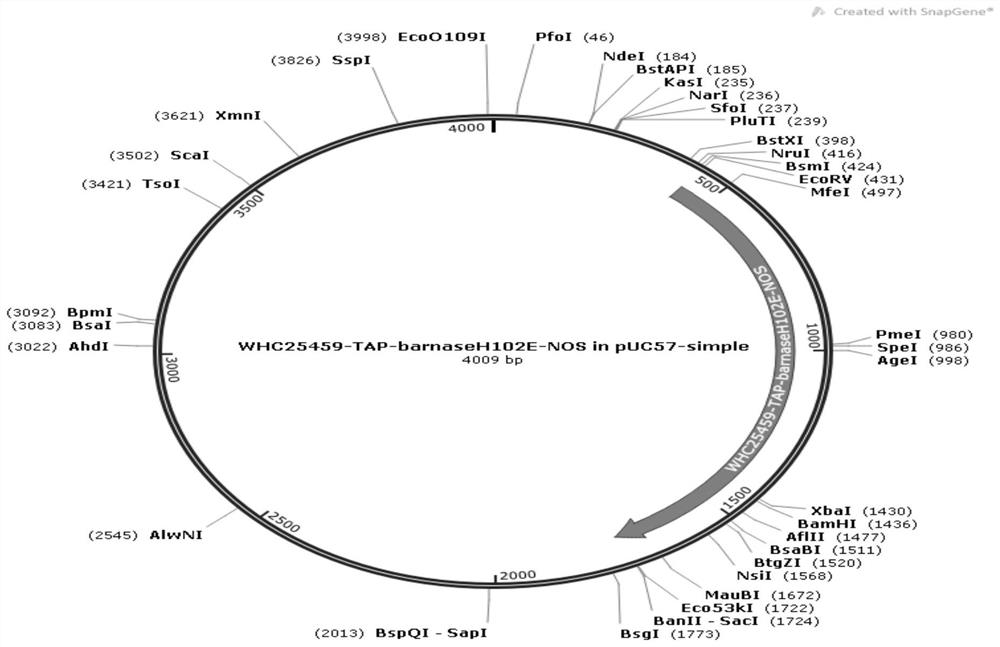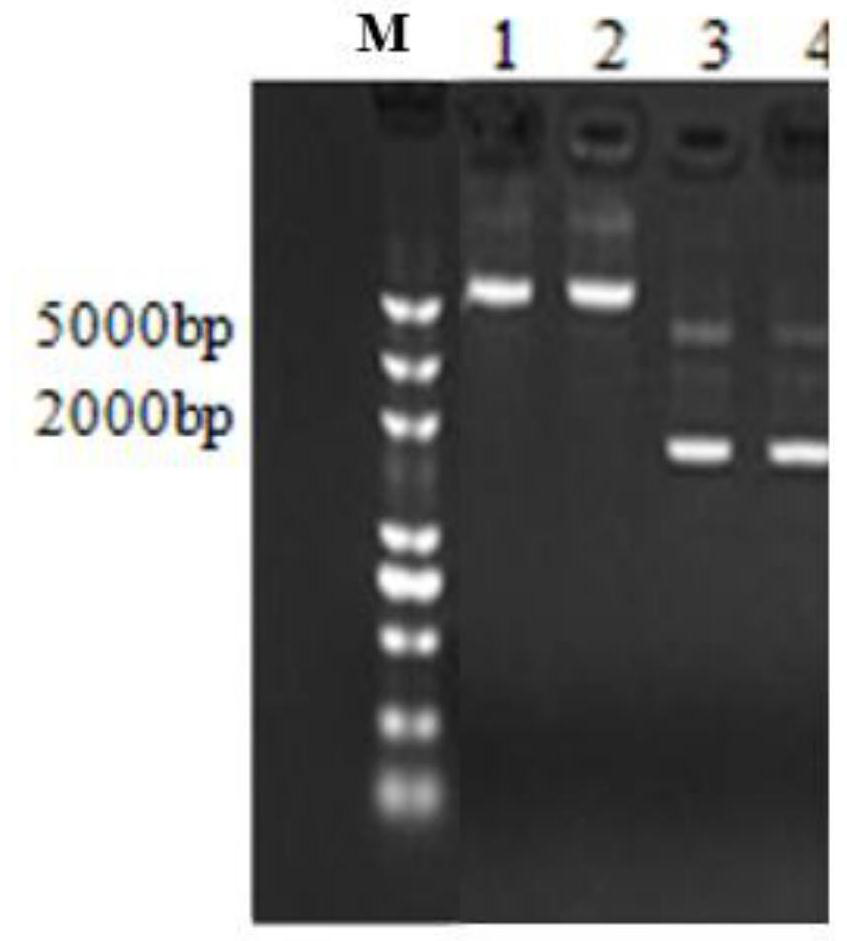Cultivation method for lily with pollen abortion and herbicide-resistance
A technology against herbicides and pollen abortion, applied in chemical instruments and methods, botany equipment and methods, biochemical equipment and methods, etc., can solve the problems of low artificial weeding efficiency, high labor costs, and high production efficiency
- Summary
- Abstract
- Description
- Claims
- Application Information
AI Technical Summary
Problems solved by technology
Method used
Image
Examples
Embodiment 1
[0033] 1.1 Synthesis of TA29-Barnase-Nos element
[0034] The TA29-Barnase-NOs element sequence information was searched in the NCBI database, and SpeI and PstI restriction sites were added between the TA29 promoter and the Barnase regulatory element to facilitate replacement of the promoter in subsequent experiments. Send the sequence information to Huada Genomics Co., Ltd. to synthesize the TA29-Barnase-NOs element, and the sequence is shown in SEQ ID NO:1. BGI inserted the synthesized element into the pUC57-simple vector, and the vector obtained after insertion was named pUC57-simple-TA29-bar (Pucs7-bar for short), such as figure 1 shown.
[0035] 1.2 Preparation of LB medium
[0036] The composition of 150mL solid liquid medium is as follows:
[0037] Table 1.1 LB medium
[0038]
[0039] 1.3 Plasmid amplification and extraction
[0040] The Pcambia3301 and Pucs7-bar plasmids were extracted using Shanghai Sangong Sanprep column plasmid extraction kit.
[0041] 1.4...
Embodiment 2
[0066] Example 2 Agrobacterium-mediated system establishment and optimization
[0067] 2.1 Pre-cultivation
[0068] Choose healthy lily seedlings, cut lily scales size, inoculated in M1 medium. The scales that were not directly pre-cultured were used for pre-culture for 1d, 2d, 3d and 4d in the dark at 25°C, with the same co-cultivation time, the same concentration of Agrobacterium treatment and the same selection culture conditions. After 40 days, the pre-incubation time was determined by counting and comparing the regeneration rate of different resistant shoots. The results of the study showed that pre-cultivation for three days was the most favorable for transformation (see Figure 8 ).
[0069] 2.2 Preparation of Agrobacterium
[0070] 200uL containing the carrier (referring to obtain such as Figure 7 The bacterial solution of the indicated recombinant vector) was added to 5 mL of LB liquid medium, and cultured at 28° C. for 20-25 hours on a shaker at 180 r / min. A...
Embodiment 3
[0085] Example 3 Molecular Detection of Resistant Plants
[0086] 3.1 PCR detection
[0087] From the screening medium of step 2.4, select the plants with normal growth to carry out PCR detection and GUS identification results such as Figure 12 As shown, figure a is the result of PCR detection, figure b is the result of GUS identification, where M: Marker DL2000; P: positive plasmid; 0: untransformed lily; 1-16 in figure a: transformed lily; 1-13: Transform Lily. The results of PCR identification showed that the detected plants (No. 1-16) were all positive, and GUS identification showed that the detected plants (No. 1-13) were all positive, which preliminarily proved that the target gene had been transformed into the lily plant genome.
[0088] 3.2 Recovery of PCR positive fragments for sequencing
[0089] PCR positive fragments were recovered, and the sequencing results were completely consistent with the target gene sequence Figure 13 , which fully proves that the targ...
PUM
 Login to View More
Login to View More Abstract
Description
Claims
Application Information
 Login to View More
Login to View More - R&D
- Intellectual Property
- Life Sciences
- Materials
- Tech Scout
- Unparalleled Data Quality
- Higher Quality Content
- 60% Fewer Hallucinations
Browse by: Latest US Patents, China's latest patents, Technical Efficacy Thesaurus, Application Domain, Technology Topic, Popular Technical Reports.
© 2025 PatSnap. All rights reserved.Legal|Privacy policy|Modern Slavery Act Transparency Statement|Sitemap|About US| Contact US: help@patsnap.com



